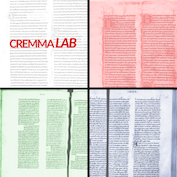|
Colloque « Documents anciens et reconnaissance automatique des écritures manuscrites », 23 et 24 juin 2022, ENC, Paris. Cette manifestation scientifique se tiendra les 23 et 24 juin 2022 à l’École nationale des chartes (65, rue de Richelieu, 75002 Paris), en salle Delisle (rez-de-chaussée haut). Elle se déroulera selon des modalités mixtes avec une diffusion en live sur Youtube : - Le 23 juin : https://www.youtube.com/watch?v=dE1XUXiuitU - Le 24 juin : https://www.youtube.com/watch?v=YORfV0yIsQg Nombre de projets incluent aujourd’hui une étape d’acquisition automatique du texte dans leur chaîne de production ou d’exploitation des données. Plusieurs plateformes de transcription et différents moteurs HTR sont maintenant disponibles. L’intégration de cette technologie dans des chaînes de traitement de plus en plus efficaces a entraîné une automatisation des tâches qui remet en question la place du chercheur dans le processus d’établissement du texte. Cette nouvelle pratique, gourmande en données, rend pressant le besoin de rassembler, et donc d’harmoniser les corpus nécessaires à la constitution de corpus d’entraînement, mais aussi leur mise à disposition pour améliorer la qualité des résultats de l’HTR. Dans le cadre du projet CREMMALab soutenu par le DIM MAP, l’École nationale des chartes (centre Jean Mabillon) en partenariat avec le LAMOP et le LabEX Hastec organise les 23 et 24 juin 2022 un colloque mêlant questions philologiques et techniques pour faire un état des lieux scientifique de l’HTR pour les documents anciens. Nous ferons le point à cette occasion sur l’HTR et ses outils, ses résultats, ses apports et les nouvelles pratiques qu’induit son utilisation dans les projets d’édition et d’exploitation des documents. Cet événement permettra de rassembler une communauté internationale de chercheurs, aujourd’hui grandissante, pour échanger autour de l’usage de l’HTR dans leurs projets scientifiques. Enfin, ce colloque repose sur la volonté de traiter la thématique de l’HTR tout en l’articulant à des problématiques scientifiques de constitution et/ou d’exploitation des corpus. Nous souhaitons également questionner les aspects pratiques de l’utilisation de cette technologie (développement de moteur HTR, d’interface de transcription, d'interface utilisateurs pour utiliser et entrainer des modèles, etc.), tout en soulevant ses enjeux méthodologiques et son impact sur les données de la Recherche. Si vous souhaitez participer à ces journées en présence, pensez à vous inscrire au lien suivant : https://dahtr.sciencesconf.org/registration
Programme détaillé - Jour 1
Programme détaillé - Jour 2
Organisateurs Comité d’organisation : Ariane Pinche et Floriane Chiffoleau Comité scientifique : Jean-Baptiste Camps, Alix Chagué, Thibault Clérice, Frédéric Duval, Vincent Jolivet, Benjamin Kiessling, Nicolas Perreaux, Ariane Pinche, Laurent Romary, Peter Stokes Pour toute demande de renseignement, vous pouvez nous contacter à l’adresse suivante : dahtr@sciencesconf.org |


